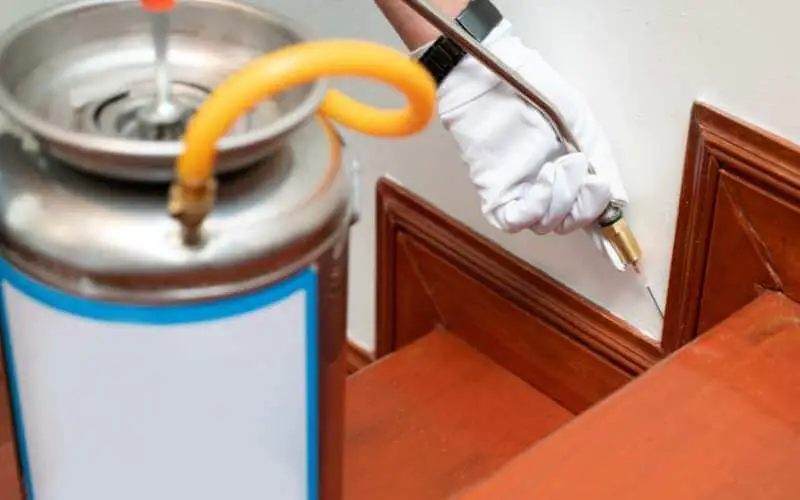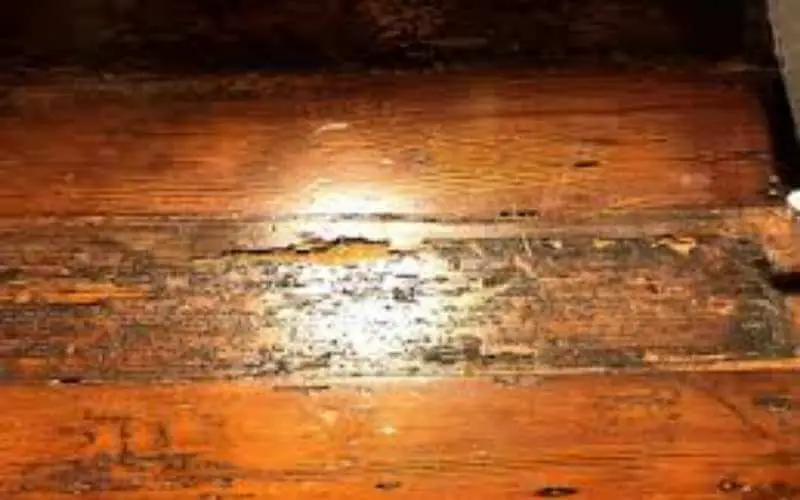It is estimated by the pest control company Orkin that a little above $5 billion is spent yearly by homeowners across the country on termite control and repair of the damages they cause.
These tiny bugs cause a bit more damage than one would imagine. Getting rid of termites on hardwood floors is not the easiest thing to do, too, because it is quite difficult to spot termite infestation inside hardwood floors, and when you do, it might have caused extensive damage to the floorboards.
Pertaining how to get rid of termites in hardwood floor, using liquid termite barrier, poisoned bait, boric acid, chemical treatments and nematodes are the best solutions out there today.
The presence of holes, sawdust, and mud tube formation along some areas of your home is one of the few ways to know if your hardwood floor has termites.
There are more telling signs of termites in hardwood floors which are discussed below, and here’s how to get rid of termites in hardwood floor, should you confirm an infestation.
Related: Best Hardwood Floor Polishes
How to Get Rid of Termites in Hardwood Floor
Table of Contents
It’s not easy to spot termite infestation on hardwood floors because these pests are typically present in the hidden parts of the floor with softer wood like the subfloor and other supporting components, such as the joists and beams.
It could take you time to detect a termite infestation in the hardwood floors, and when you do, here are a few effective ways to get rid of them:
1. Liquid Termite Barrier
Liquid termite barriers are very effective as a termite-killing solution; they also work as a preventative method to prevent future infestation of the pests. The solution is applied around the house’s perimeter and underneath the flooring to disrupt the natural path of the termites.
This termite barrier contains a chemical that prevents the termites from gaining entry into your home; once they come in contact with the treatment, the pests are instantly poisoned.
Most liquid termite barriers are safe to use around pets and children. There’s also low chances of exposure to anyone who accesses the area because of the way the chemical is directly injected into the soil. But err on the side of caution and keep children and pets away from the area where the barrier is being applied.
2. Poisoned Bait
If the liquid termite barriers are an overkill solution, your hardwood floor does not suffer a serious terminate infestation. You can go for a gentler approach by using poisoned baits.
Poisoned baits attract the termites, which poisons and kill them after some time. Some termites might even take the bait back to their colony, where it affects more termites. You can place the poisoned baits strategically around the house’s perimeter.
3. Boric Acid
If you want a natural solution that is equally as effective against termite infestation, then boric acid is the option for you. It is effective against termites and different kinds of insect pests indoors, such as ants and roaches.
It takes about 3 to 7 days for termites to die after coming in contact with boric acid. The chemical is safe to use around pets and children because it has low toxicity levels. Refer to the label instructions of the boric acid before using it in order to prevent any mishaps.
4. Chemical Treatment
For indoor infestation of termites, you would need to be wary of the treatment you use. An effective and safe solution to use in eliminating termites is direct chemical treatment. These liquid termiticides are also known as “spot treatments” because professionals apply them in specific places.
After spotting a termite infestation on your hardwood floors, drill holes into the floorboard and apply the foam. You can also use any existing cracks and crevices created by the termites to get the termiticide underneath the flooring.
The substance poisons the entire colony in the hardwood floors and eliminates all the termites.
Read: How Do You Keep Your House Warm on Hardwood Floors?
5. Nematodes
A chemical-free way you can get rid of termites on hardwood floor is by using nematodes. These are microscopic roundworms that attack hazardous insects like termites; this is a chemical-free solution to the infestation of termites in wood floors.
The nematodes used in this process are completely harmless to humans. They should not be mistaken for parasitic nematodes that might infect humans; these are roundworms and a very different kind of nematode.
When the nematodes gain entry into the termites’ bodies, they feed off them and release bacteria into the termite’s body; this causes blood toxicity and ultimately death. After the death of a termite, the nematode multiplies and spread to infect other termites.
Signs Of Termites In Hardwood Floors
Presence of Swarmers
Bright light sources such as bulbs and lamps greatly attract termite swarmers, and they typically shed their wings after a while. The presence of discarded swarmer wings around your house is a sign of termite infestation.
Mud Leads
Termites tend to create a way of accessing the interior areas of the home by building mud leads, also known as shelter tubes. So if you spot any red or muddy rail line running up the wall of your house, you might have some termite company.
Frass Pellets
If your home is infested with termites, you may spot termite faeces along the wall cracks, which the termites use as exits. Each frass pellet is about 1/32-inches in length and has a pointy end.
Spongy Wood Flooring
If you notice your wood flooring becoming unusually soft and the hardwood floor pieces can be easily penetrated by a sharp tool, then you may be dealing with a termite infestation issue.
Hollow Sounds
Another indicator of termite damage on your hardwood floors is the presence of hollow sounds when the area is tapped. The hollow sound is produced by the cavities created when the pests bore through the wood.
Raised/Detached Floorboard
Tunnel rails are established as termites eat through your wooden floor joists and subfloor; this subsequently leads to the lifting of the floorboard.
Termites can also damage the glue binding your floorboard to the floor, so you can also tell if you have a termite problem by the presence of a detached floorboard.
Read: How to Fix Loose Floorboards Under Carpet
Conclusion
You can tell if you have termites on hardwood floor if you spot discarded swarmer wings typically shed by termites swarmers greatly attracted to bright light sources.
A rail of mud leads is also a great pointer to this issue, and if you should confirm an infestation, you can get rid of termites in the wood floor by using boric acid, liquid termite barrier, poisoned bait or you can go chemical-free and eliminate the termites using nematodes.

